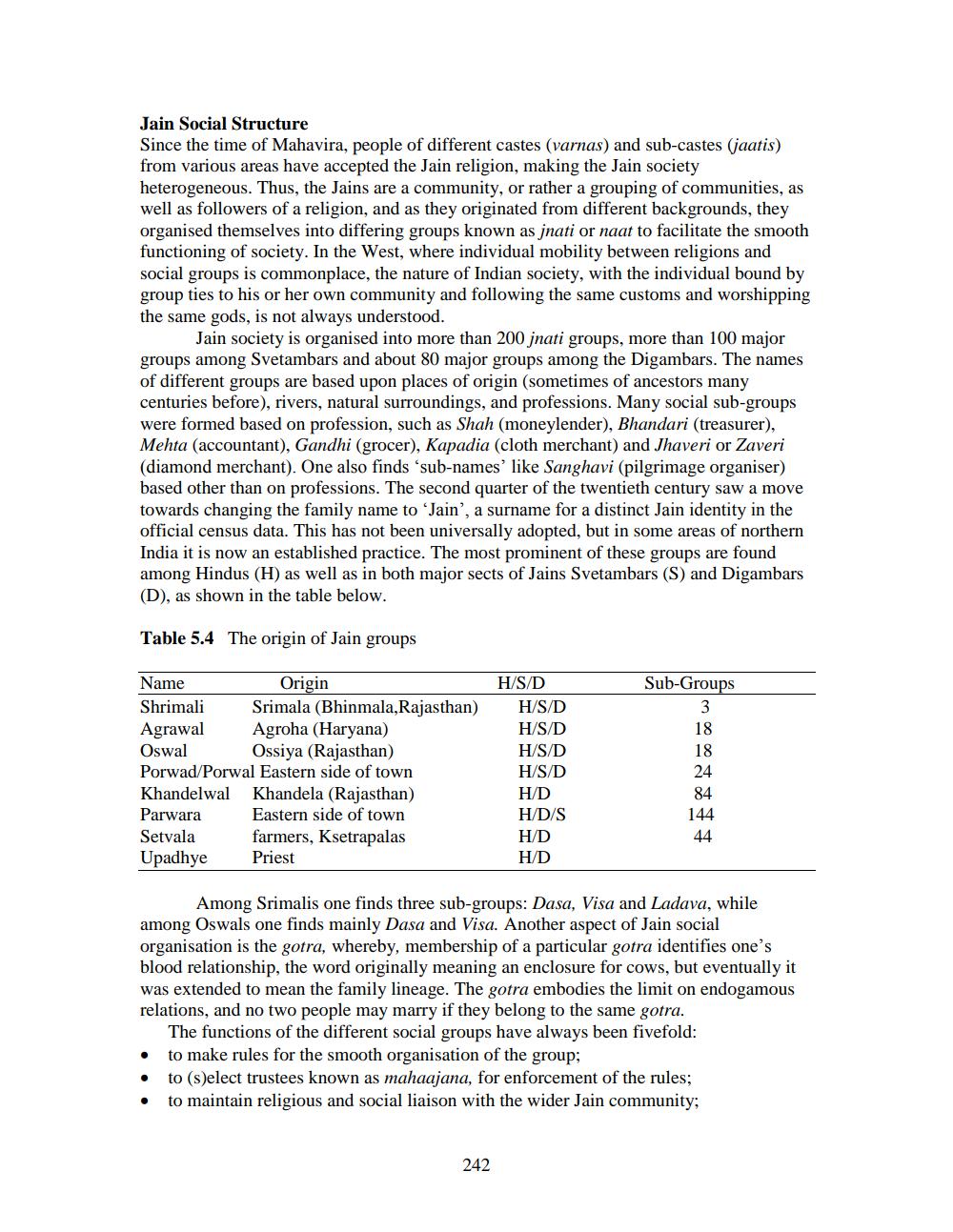________________
Jain Social Structure Since the time of Mahavira, people of different castes (varnas) and sub-castes (jaatis) from various areas have accepted the Jain religion, making the Jain society heterogeneous. Thus, the Jains are a community, or rather a grouping of communities, as well as followers of a religion, and as they originated from different backgrounds, they organised themselves into differing groups known as jnati or naat to facilitate the smooth functioning of society. In the West, where individual mobility between religions and social groups is commonplace, the nature of Indian society, with the individual bound by group ties to his or her own community and following the same customs and worshipping the same gods, is not always understood.
Jain society is organised into more than 200 jnati groups, more than 100 major groups among Svetambars and about 80 major groups among the Digambars. The names of different groups are based upon places of origin (sometimes of ancestors many centuries before), rivers, natural surroundings, and professions. Many social sub-groups were formed based on profession, such as Shah (moneylender), Bhandari (treasurer), Mehta (accountant), Gandhi (grocer), Kapadia (cloth merchant) and Jhaveri or Zaveri (diamond merchant). One also finds 'sub-names' like Sanghavi (pilgrimage organiser) based other than on professions. The second quarter of the twentieth century saw a move towards changing the family name to 'Jain', a surname for a distinct Jain identity in the official census data. This has not been universally adopted, but in some areas of northern India it is now an established practice. The most prominent of these groups are found among Hindus (H) as well as in both major sects of Jains Svetambars (S) and Digambars (D), as shown in the table below.
Table 5.4 The origin of Jain groups
Sub-Groups
Name
Origin Shrimali Srimala (Bhinmala, Rajasthan) Agrawal Agroha (Haryana) Oswal Ossiya (Rajasthan) Porwad/Porwal Eastern side of town Khandelwal Khandela (Rajasthan) Parwara Eastern side of town Setvala farmers, Ksetrapalas Upadhye Priest
H/S/D
H/S/D H/S/D H/S/D H/S/D H/D H/D/S HD H/D
144
44
Among Srimalis one finds three sub-groups: Dasa, Visa and Ladava, while among Oswals one finds mainly Dasa and Visa. Another aspect of Jain social organisation is the gotra, whereby, membership of a particular gotra identifies one's blood relationship, the word originally meaning an enclosure for cows, but eventually it was extended to mean the family lineage. The gotra embodies the limit on endogamous relations, and no two people may marry if they belong to the same gotra.
The functions of the different social groups have always been fivefold: to make rules for the smooth organisation of the group; to (s)elect trustees known as mahaajana, for enforcement of the rules; to maintain religious and social liaison with the wider Jain community;
242




